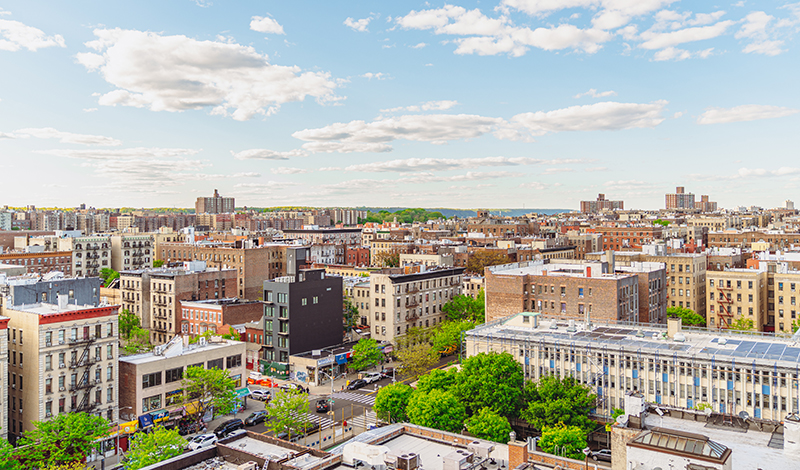with SGI-USA Youth Leaders Amelia Gonzalez Tesch and Shota Okajima
World Tribune: How do the upcoming March Youth Peace Festivals play into 2024 as the Year of Fresh Departure for a Youthful Soka Gakkai Worldwide?
Amelia Gonzalez Tesch: Each SGI-USA member can remain ever-youthful! And one of the best ways to do so is by looking toward the future and fostering the youth. These festivals are an opportunity for all SGI-USA members to take a step forward in their lives and empower young people in their local communities.
What is the significance of holding them at the chapter level?
Amelia: Nichiren Daishonin writes, “I entrust you with the propagation of Buddhism in your province.”[1] Many of these festivals will be hosted in homes or in the community, embodying this spirit. We don’t need to look far; we can treasure those in our environment.
Shota Okajima: That’s right. Having these events at the chapter level enables us to become even more grounded where we are. It’s an opportunity to entrust chapter youth leaders and, in cases where there are no youth leaders, other point persons to take the lead. Capable young people are already here; it’s up to us to engage them life-to-life and awaken them to their mission as Bodhisattvas of the Earth.
WT: How can each chapter make this event their own?
Shota: Let’s set clear goals! Sensei says:
If the goals are vague, people will find them difficult to relate to and take on as a personal challenge. Consequently, they won’t make serious efforts to realize those goals.
At the same time, it is important not to impose goals on others. … The passion and enthusiasm emanating from … leaders inspire others to give their all for kosen-rufu.[2]
By setting a goal and putting prayer first, we can muster the creativity to make this event a success.
WT: What can chapters focus on starting from now?
Shota: Once we set clear goals, let’s generate lots of excitement at our chapter kickoff meetings, which serve as a launching point toward our March Youth Peace Festivals, and through home visiting youth!
Amelia: Yes! The chapter kickoff meetings are a great place to unite around this vision to transform our communities.
It all comes back to our efforts as a Soka family to “Advance With 10 Friends”—which really goes beyond March. I created a list of my 10 friends and have been striving to become a genuine friend to them. One friend with whom I have been sharing Buddhism for over three years reached out to me last year when she was struggling. She said I was the first person she thought to call. I am connecting her with her district and, this month, I’m going to make sure she can attend her discussion meeting.
As Sensei says, let’s be “‘proud architects of happiness,’ who are responsible for the happiness and welfare of their respective communities.”
The Chapter: Where Kosen-rufu Begins
In 1978, the Soka Gakkai underwent a significant structural change. At that time, Ikeda Sensei spoke about the importance of the chapter, rooted in the local community. The following excerpt can be found in the “Bold Advance” chapter of The New Human Revolution, vol. 26, pp. 299–301.
In the Soka Gakkai … a chapter is not just an outpost. In my opinion, for the area encompassed by the chapter and the people practicing Buddhism there, it has the same responsibility and mission as the headquarters. From the perspective of our organization on a national scale, the Soka Gakkai Headquarters may be the central hub, but I hope each of you will strive to establish and develop Buddhism in your respective communities thinking of the chapter as the headquarters in your area. …
“Our head corresponds to myo, our throat to ho, our chest to ren, our stomach to ge, and our legs to kyo. Hence this five-foot body of ours constitutes the five characters of Myoho-renge-kyo”[3] (The Record of the Orally Transmitted Teachings, p. 28).
Buddhism teaches that we ourselves are entities of Myoho-renge-kyo, or the Mystic Law. When he says our legs correspond to kyo, we may interpret this as meaning ‘action.’ Let’s courageously take action with the resolve to realize kosen-rufu in our community and transform it into an oasis of happiness. Let’s regard the place we are now, to which we have profound ties, as an eternal and ever-abiding Buddha land.
Without such determination and action, you can live here for decades without making any progress in kosen-rufu. Our pioneer members became only more spirited in their activities as social attitudes harshened toward the Soka Gakkai in their communities. They threw themselves wholeheartedly into propagating Nichiren Buddhism, no matter what challenges they faced, undaunted by any opposition. That’s why they succeeded in opening a way forward for kosen-rufu, received enormous benefit, and have lives brimming with joy and hope. …
Kosen-rufu is not somewhere far off. It lies within our own lives, in our families, in our relationships with neighbors, in our circle of members. That’s where we must build a model for kosen-rufu.
First, make your own base solid—that’s what I want to emphasize most. Unless you are firmly grounded, no matter how grand the organization appears to be, it will be a castle built on sand.
January 12, 2024, World Tribune, p. 8
References
- “The Properties of Rice,” The Writings of Nichiren Daishonin, vol. 1, p. 1117. ↩︎
- Making the Impossible Possible, pp. 17–18. ↩︎
- Myoho-renge-kyo is written with five Chinese characters, while Nam-myoho-renge-kyo is written with seven (nam, or namu, comprises two characters). The Daishonin often uses Myoho-renge-kyo synonymously with Nam-myoho-renge-kyo in his writings. ↩︎
You are reading {{ meterCount }} of {{ meterMax }} free premium articles

